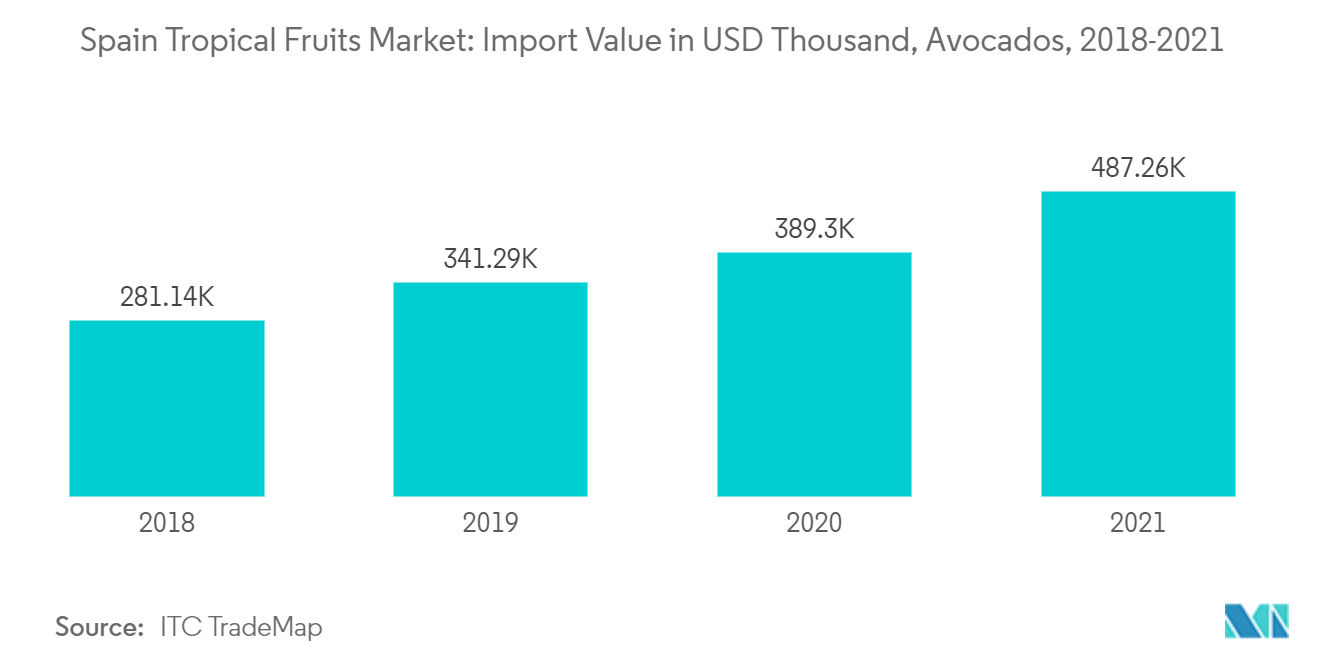Market Trends of Spain Tropical Fruits Industry
This section covers the major market trends shaping the Spain Tropical Fruits Market according to our research experts:
Increasing Popularity Among Health-Conscious Consumers
With increasing urbanization, higher disposable incomes in developed countries, and increased awareness about healthy diets, people are shifting toward healthier diet plans, including fresh fruits. The increasing initiatives by the government to improve the health of consumers in developing countries have positively impacted the market for fruits like mangoes, avocados, and blueberries. The urban population is gradually becoming more aware of the origin and type of food consumed, including brands of avocado like Fruto Rojo-fusica and Yellow fruit. This has prompted growers to supply high-quality products and adopt different distribution channels like hypermarkets/supermarkets and online channels to meet the growing demands of consumers.
The dragon fruit has high water content and is a good source of iron, magnesium, B vitamins, phosphorus, protein, calcium, and fiber. The fruit's edible seeds are also nutritious, as they are high in polyunsaturated fats, like omega-3 and omega-6 fatty acids, which have been shown to lower the risk of cardiovascular disorders. Mango contains 99 calories, 1.4 grams of protein, 25 grams of carbs, and 0.6 grams of fat found in one cup of raw mango chunks (165g). Mangoes, particularly Osteen, Kent, Tommy Atkins, and Red Palme, are a great source of vitamin C, E, and folate.
Furthermore, fruits like avocado are rich in antioxidants which help to protect or delay the body's cells from damage from free radicals (which experts believe may be a cause of cancer, atherosclerosis, and other diseases). Henceforth, the shift toward a healthier diet from a conventional diet, along with the increased awareness among consumers for these fruits, is expected to drive the market during the forecast period.

Dragon Fruit Can Withstand Weather Fluctuation And Poor Soil
The dragon fruit is tolerant of drought, heat, and poor soil. It is also tolerant of cold. However, damage to the plant is apparent if temperatures dip below freezing for a long period of time, but the plant usually recovers quickly from shorter durations of freezing temperatures.
Due to this, dragon fruit is a particularly ideal plant that might produce in areas where other fruits and vegetables cannot. This fruit can be grown on a wide range of soils, from sandy loam to clay loam. Though the tropical climate is ideal for red skin red pulp dragon fruit cultivation, the sturdy crop can survive in any climatic condition favorable for flowering and fruiting and soil conditions provided with good drainage. Not much disease generally affects this plant. Common problems, like root rot, sunburn, and bird attacks, can be handled relatively easily. Therefore, many farmers are picking up dragon fruit cultivation in regions where it has never been cultivated. There is a potential for off-season dragon fruit production, including red skin red pulp variety.
Dragon fruits are relatively long-lived perennials and can produce their first fruits within one year of their establishment. It can continue to fruit annually for 20 to 30 years before with marginal care and cultural conditions. Hence, because these plants can be grown in relatively adverse conditions, in opposition to other fruits that require an optimum growth environment, their cultivation is steadily becoming more popular, thereby contributing to the market's growth.


